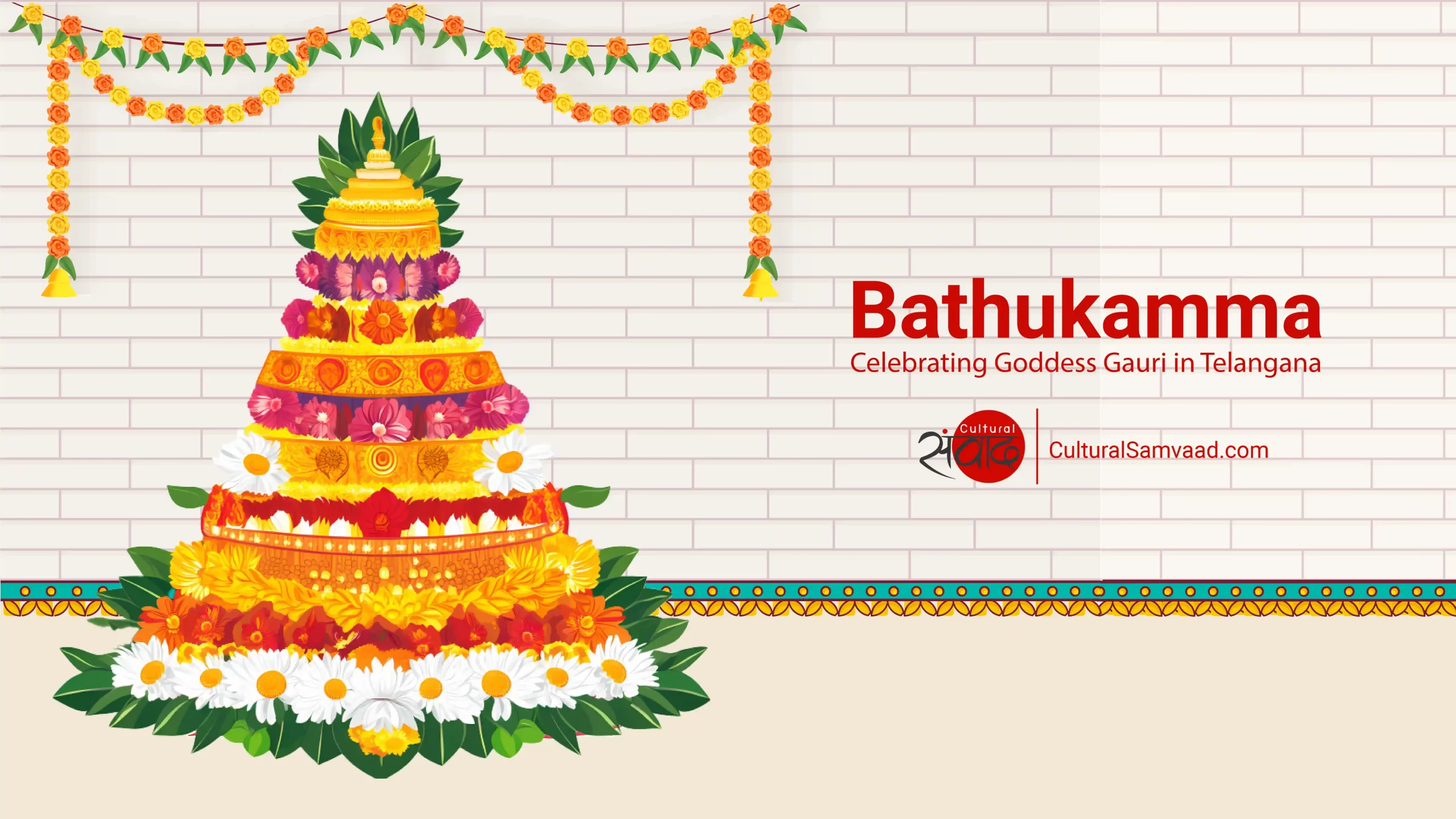The sacred landscape of India is dotted with innumerable temples. These timeless monuments are imbued with spirituality, steeped in history and ornamented with exquisite art and sculpture. A handful of these temples have been inscribed in the UNESCO World Heritage Sites List over the years. Even though all these temples are not living temples where regular worship is carried out, the kaleidoscope of their religious, artistic and historical flavours are to be savoured by one and all – by the devout and the philosopher, by the poet and the artist, by the lay tourist and the academic, by the student and the teacher, by the child and the parent. In this piece, we have put together a brief description of some of the major temples included in the UNESCO World Heritage Sites List from India.
Join Cultural Samvaad’s WhatsApp community
Kailashnatha Temple, Ellora Caves
Dedicated to Shiva, the breathtaking, monolithic, 8th-century CE, Kailashnatha Temple is one of the most prominent structures at the Ellora Caves located in Maharashtra that were inscribed in the UNESCO List in 1983. Most of the excavation of this stunning rock-cut marvel was done by the Rashtrakutas though the temple does show traces of Pallava and Chalukya styles.
Know the UNESCO World Heritage Sites from India
Sun Temple, Konarak
1984 saw the inscription of the 13th-century CE, highly stylised Sun Temple at Konark in Odisha which is visualised as a chariot of Surya Deva with 24 giant wheels and led by 7 horses. Also known as the ‘Black Pagoda’ in European sailor accounts or the Surya Devalaya, this Kalinga-style temple is attributed to King Narasingha Deva I of the Eastern Ganga dynasty .
Shore Temple Complex, Mamallapuram
A part of the Group of Monuments at Mamallapuram in Tamil Nadu, also inscribed in 1984, the majestic 8th-century CE, Shore Temple Complex has shrines dedicated to both Shiva and Vishnu. Built by the Pallavas, the complex houses one of the oldest extant structural temples in India and is home to some exquisite reliefs.
Kandariya Mahadeva Temple, Khajuraho | Lakshmana Temple, Khajuraho | Parshavanatha Temple, Khajuraho
The Khajuraho Group of Monuments in Madhya Pradesh which were inscribed in the UNESCO list in 1986 and built by the Chandelas are renowned for their sculptural excellence. Some of the prominent temples at Khajuraho are mentioned hereunder.
- The grand and unsurpassed 11th-century CE, Kandariya Mahadeva Temple dedicated to Shiva was probably constructed by King Vidyadhara to celebrate his successful defence against Mahmud of Ghazni. It is the largest temple in this group of monuments.
- The 10th-century CE, Lakshmana Temple is a key shrine dedicated to Vaikuntha Vishnu.
- The 10th-century CE, Parshavanatha Temple is dedicated to the 23rd Jain Tirthankara Parshavnatha and is the largest among the Jain temples on the site. It is likely that earliest idol enshrined in the Parshavanatha Mandir was probably that of the 1st Jain Tirthankara Adinath.
- The 9th-century CE, Chausath Yogini Temple is the oldest monument of the group but now lies largely in ruins.
Virupaksha Temple, Hampi | Vitthala Temple Complex, Hampi
The Group of Monuments at Hampi in Karnataka were also inscribed in the UNESCO List in 1986. Hampi or Pampa-kshetra is an ancient site on the banks of the river Tungabhadra and was also the capital of the Vijayanagara Empire.
- One of the oldest structures with a long, uniterrupted history in this group of monuments is the living and towering 7th-century CE Virupaksha Temple dedicated to Shiva and his consort Pampadevi. The sacred space had multiple levels of growth and it survived the large-scale destruction at the site by the Bahmani Sultanate.
- The 16th-century CE Vitthala Temple Complex houses the Vitthala temple dedicated to Vithoba who is generally considered to be a form of Vishnu. It is also home to the stunning and unmissable Garuda Shrine shaped like a stone chariot which is perhaps the most well recognised marker of Hampi.
Virupaksha Temple, Pattadakal | Papanatha Temple, Pattadakal | Jain Sanctuary, Pattdakal
The grand 8th-century CE Virupaksha Temple, dedicated to Mahadeva and sponsored by a Queen and the unusual Papanatha Temple also dedicated to Shiva are among the nine Hindu temples and a Jain sanctuary that constitute the Group of Monuments at Pattadakal in Karnataka which were inscribed in 1987.
Cave I, Elephanta Caves
The 5th to 6th centuries CE, Elephanta Caves or Gharapuri Leni which were also inscribed in 1987, include a sarvatobhadra shrine dedicated to Shiva and the 7m high masterpiece of Sadashiva in Cave I.
Brihadeeswara Temple, Thanjavur | Brihadeeswara Temple, Gangaikonda Cholapuram | Airavatesvara Temple, Darasuram
The towering and architecturally brilliant Brihadeeswara Temple at Thanjavur which houses a giant Shiva linga and was inscribed in 1987 and the Brihadeeswara Temple at Gangaikonda Cholapuram and the Airavatesvara Temple at Darasuram inscribed in 2004, together constitute the outstandingly marvellous, 11th and 12th century CE Great Chola Living Temples in Tamil Nadu dedicated to Shiva.
Mahabodhi Temple Complex, Bodhgaya
The Mahabodhi Temple Complex at Bodh Gaya in Bihar stands at the holy site where Gautama Buddha attained enlightenment. Inscribed in 2004, the temple whose history begins in the 3rd century BCE, was last renovated in the 19th century CE.
Kalika Mata Temple, Pavagadh | Jain Temples, Pavagadh
The Champaner-Pavagadh Archaeological Park in Gujarat which was inscribed in 2004 houses the famous Kalika Mata Temple in addition to the numerous Jain Shrines that dot the sacred Pavagadh hill.
Kakatiya Rudreshwara (Ramappa) Temple, Telangana
The 13th century CE, richly adorned and stunning Kakatiya Rudreshwara (Ramappa) Temple in Telangana dedicated to Shiva was inscribed in the UNESCO World Heritage List in 2021. As the name indicates, this marvel in sandstone, was constructed during the period of the Kakatiyas under rulers Rudradeva and Recharla Rudra. The UNESCO
Channakeshava Temple, Belur | Hoysalesvara Temple, Halebidu | Keshava Temple, Somanathapura
The 12th and 13th centuries CE, visually astounding and intricately ornate, Sacred Ensembles of the Hoysalas in Karnataka were constructed by the Hoysalas and inscribed in the UNESCO World Heritage List in 2023. They include:
- The Channakeshava Temple at Belur dedicated to Vishnu,
- The Hoysalesvara Temple at Halebidu dedicated to Shiva and;
- The Keshava Temple at Somanathapura dedicated to Vishnu
The pilgrim’s journey to India’s timeless temples will perhaps continue to the end of time…






Add comment